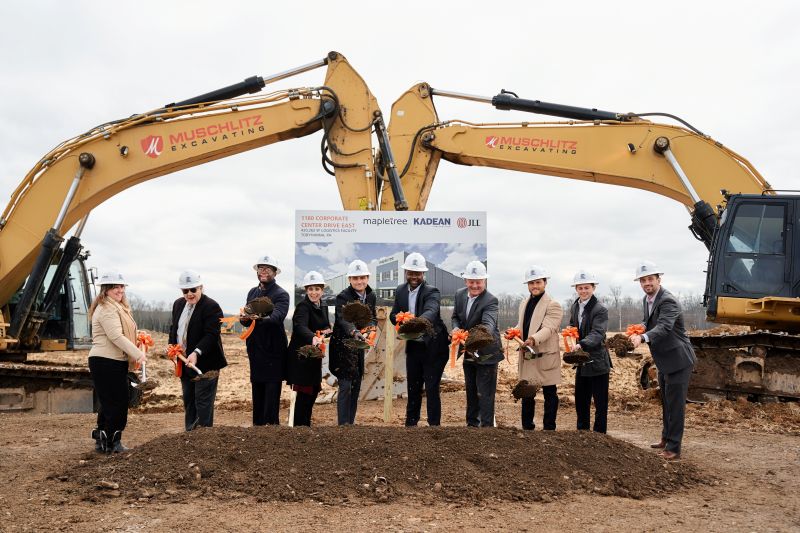SNG: Congo DRC links security prospects to regional infrastructure projects – TradingView

Report on DRC Infrastructure Initiatives and Alignment with Sustainable Development Goals
1.0 Introduction: Fostering Peace and Prosperity through Economic Integration
The Democratic Republic of Congo (DRC) is spearheading a strategy to establish regional security and shared economic prosperity through the development of major cross-border infrastructure projects. This approach directly supports several Sustainable Development Goals (SDGs), primarily SDG 16 (Peace, Justice and Strong Institutions) by promoting economic interdependence to reduce conflict, and SDG 8 (Decent Work and Economic Growth) by unlocking the region’s vast economic potential. Congolese Prime Minister Judith Suminwa highlighted the region’s significant assets, including mineral deposits, water resources, and a youthful population, as foundational elements for this growth. The DRC’s economy, which expanded by 6.5 percent in 2024, is driven by its extractive sector, particularly copper and cobalt, which are critical for global clean energy technologies, linking regional development to SDG 7 (Affordable and Clean Energy).
2.0 Strategic Transboundary Projects and SDG Contributions
The DRC is championing three strategic initiatives designed to enhance connectivity, stimulate trade, and build mutual trust, thereby contributing to SDG 9 (Industry, Innovation, and Infrastructure).
- The Lobito Corridor
- Connects the DRC and Zambia to Angola’s Atlantic port, creating a vital trade route.
- Promotes SDG 8 by catalyzing investments in new industrial clusters and a dry port.
- Supports SDG 7 by facilitating the export of cobalt and copper, essential for global clean energy supply chains.
- Addresses SDG 4 (Quality Education) through the planned Lobito Corridor Academy, which will train local labor and build regional capacity.
- Aims to connect the DRC and Burundi to the Indian Ocean port of Dar es Salaam.
- Enhances regional integration and trade, directly contributing to SDG 9 and SDG 8 by opening up new markets.
- The 223km network is designed to strengthen cross-border commerce and enhance security in historically volatile border regions.
- This dual-purpose project directly advances SDG 16 by stabilizing border zones and SDG 8 by stimulating trade and economic activity between the two nations.
3.0 International Cooperation: Partnerships for the Goals (SDG 17)
The success of these ambitious projects hinges on robust international and regional collaboration, a clear embodiment of SDG 17 (Partnerships for the Goals). The DRC is leveraging its strategic position at the junction of five integration blocs to foster cooperation.
- European Union: Mobilized €2 billion under its Global Gateway initiative to expand the Lobito Corridor.
- United States: Pledged a $550 million loan via the International Development Finance Corporation to support the Lobito Corridor, viewing it as critical for diversifying mineral supply chains.
- China: Remains a significant partner in regional infrastructure, with ongoing support for the revitalization of the Tanzania–Zambia Railway (Tazara) to boost freight capacity and create jobs.
- World Bank: Actively supporting the Lobito Corridor with approximately $500 million, facilitating Public-Private Partnership (PPP) arrangements, and guaranteeing $2 billion to strengthen the project’s broader ecosystem, including the establishment of the Lobito Corridor Academy.
4.0 Challenges to Sustainable Development and Regional Stability
Despite significant progress and international support, insecurity remains a primary obstacle to achieving the full potential of these infrastructure projects. This directly threatens the advancement of SDG 16.
- Acts of theft, vandalism, and attacks by armed groups have slowed construction, particularly along the Uganda–DRC corridors.
- The presence of militant groups such as the Allied Democratic Forces (ADF) necessitates joint security operations between Ugandan and DRC forces to stabilize the region.
- Officials emphasize that achieving regional stability is a prerequisite for the infrastructure projects to deliver their intended economic and social benefits, underscoring the interconnectedness of peace and development.
5.0 Conclusion: A Vision for an Integrated and Sovereign Africa
The DRC’s infrastructure-led strategy represents a tangible effort to build a connected, competitive, and sovereign Africa. By creating an integrated transport spine linking the Atlantic and Indian Oceans, the initiative aims to shift the regional narrative from one of conflict to one of economic opportunity and cooperation. Officials maintain that by increasing the costs of confrontation, economic integration serves as a powerful tool for peaceful dispute resolution. These projects are therefore not merely infrastructure; they are the foundation for sustainable peace and prosperity, fully aligned with the principles of the 2030 Agenda for Sustainable Development.
1. Which SDGs are addressed or connected to the issues highlighted in the article?
SDG 8: Decent Work and Economic Growth
- The article emphasizes anchoring regional security in “shared economic prosperity.” It highlights the Democratic Republic of Congo’s (DRC) economic expansion of 6.5 percent in 2024, driven by the extractive sector. The infrastructure projects are explicitly designed to underpin economic growth, stimulate trade, and lead to job creation, such as the revitalization of the Tazara railway.
SDG 9: Industry, Innovation and Infrastructure
- This is the central theme of the article. The entire piece focuses on the development of “major cross-border infrastructure projects,” including the Lobito Corridor, the Tanzania–Burundi–DRC Standard Gauge Railway (SGR), and the Uganda–DRC road network. The goal is to develop quality, reliable, and resilient regional infrastructure to overcome limited domestic transport capacity and open up trade corridors. The article also mentions the development of new industrial clusters in metals, steel, and fuel.
SDG 16: Peace, Justice and Strong Institutions
- A core argument presented is that economic interdependence fostered by these infrastructure projects can help reduce conflict. The article quotes officials stating that these projects are “tangible proof that peace can also be built through the economy” and that economic integration encourages states to “resolve disputes peacefully.” The Uganda–DRC roads are specifically designed to “enhance security in historically volatile border regions.”
SDG 17: Partnerships for the Goals
- The article is a clear showcase of multi-stakeholder partnerships. It details collaborations between African nations (DRC, Zambia, Angola, Tanzania, Uganda) for South-South cooperation. It also highlights North-South partnerships with significant financial and technical support from the European Union (€2 billion), the United States ($550 million loan), China (Tazara railway), and the World Bank ($500 million mobilization and a $2 billion guarantee).
2. What specific targets under those SDGs can be identified based on the article’s content?
SDG 8: Decent Work and Economic Growth
- Target 8.1: Sustain per capita economic growth in accordance with national circumstances and, in particular, at least 7 per cent gross domestic product growth per annum in the least developed countries. The article mentions the DRC’s economy expanded by 6.5 percent in 2024, showing a focus on high economic growth.
- Target 8.2: Achieve higher levels of economic productivity through diversification, technological upgrading and innovation. The article points to this by mentioning the plan to develop “new industrial clusters in metals, steel and fuel” catalyzed by the Lobito Corridor.
SDG 9: Industry, Innovation and Infrastructure
- Target 9.1: Develop quality, reliable, sustainable and resilient infrastructure, including regional and transborder infrastructure, to support economic development and human well-being. The entire article is about this target, detailing the Lobito Corridor, the SGR, and the Uganda-DRC road network as key transboundary initiatives.
- Target 9.a: Facilitate sustainable and resilient infrastructure development in developing countries through enhanced financial, technological and technical support. The article provides concrete examples of this support, including the EU’s €2 billion mobilization, the US DFC’s $550 million loan, and the World Bank’s financial and technical assistance for the Lobito Corridor.
SDG 16: Peace, Justice and Strong Institutions
- Target 16.1: Significantly reduce all forms of violence and related death rates everywhere. The projects aim to achieve this by strengthening cross-border commerce to “enhance security in historically volatile border regions” and making the costs of confrontation too high. The joint military operations by Uganda and the DRC to contain the ADF also align with this goal.
SDG 17: Partnerships for the Goals
- Target 17.3: Mobilize additional financial resources for developing countries from multiple sources. The article explicitly lists financial mobilization from the EU, the US, and the World Bank, in addition to existing financing from China.
- Target 17.9: Enhance international support for implementing effective and targeted capacity-building in developing countries. The World Bank’s plan to “establish the Lobito Corridor Academy to train local labour” is a direct example of targeted capacity-building to address local skill gaps.
3. Are there any indicators mentioned or implied in the article that can be used to measure progress towards the identified targets?
Indicators for SDG 8 and SDG 9
- Economic Growth Rate: The article states the “DRC’s economy expanded by 6.5 percent in 2024,” which serves as a direct measure related to indicator 8.1.1 (Annual growth rate of real GDP per capita).
- Infrastructure Length: Specific lengths of new infrastructure are mentioned, which can be used to track progress. This includes “550 kilometres of new rail,” “260 kilometres of feeder roads,” and the “223km network” of roads between Uganda and the DRC.
- Freight and Container Volume: The article provides specific targets for transport capacity, which are direct indicators of infrastructure performance (related to indicator 9.1.2: Passenger and freight volumes). Examples include:
- Tazara railway: “increase freight capacity to 2.4 million tonnes annually.”
- Lobito Corridor: “expected to handle one million containers annually.”
- New 282km line: “projected to move at least three million tonnes of minerals a year.”
Indicators for SDG 17
- Financial Commitments: The article quantifies the financial support mobilized for the projects, which aligns with indicators measuring development finance (e.g., 17.3.1). Specific figures include:
- European Union: “mobilised €2 billion ($2.3 billion).”
- US International Development Finance Corporation: “pledged a $550 million loan.”
- World Bank: “$500 million is expected to be mobilised” and a “$2 billion” guarantee.
- Capacity-Building Initiatives: The establishment of the “Lobito Corridor Academy to train local labour” is a qualitative but important indicator of progress towards capacity-building goals (Target 17.9).
4. Table of SDGs, Targets, and Indicators
| SDGs | Targets | Indicators |
|---|---|---|
| SDG 8: Decent Work and Economic Growth | 8.1: Sustain per capita economic growth. | DRC’s economy expanded by 6.5 percent in 2024. |
| SDG 9: Industry, Innovation and Infrastructure | 9.1: Develop quality, reliable, sustainable and resilient infrastructure, including regional and transborder infrastructure. |
|
| SDG 16: Peace, Justice and Strong Institutions | 16.1: Significantly reduce all forms of violence. | Projects are designed to “enhance security in historically volatile border regions” and promote peaceful dispute resolution through economic interdependence. |
| SDG 17: Partnerships for the Goals |
17.3: Mobilize additional financial resources.
17.9: Enhance international support for capacity-building. |
|
Source: tradingview.com
What is Your Reaction?
 Like
0
Like
0
 Dislike
0
Dislike
0
 Love
0
Love
0
 Funny
0
Funny
0
 Angry
0
Angry
0
 Sad
0
Sad
0
 Wow
0
Wow
0




















































.jpg.webp?itok=0ZsAnae9#)


























